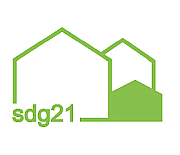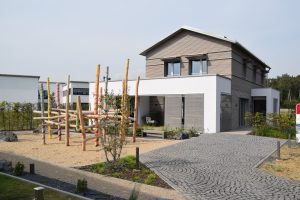Heating village heating networks with sun and wood is becoming a model for success. In Germany, five such heat supply systems are being launched this year.
While the heating sector is the problem child of the energy transition throughout Germany, numerous villages are showing how the conversion to renewable energies can be mastered in one fell swoop. More and more often, village communities are relying on a combination of sun and wood, with a large solar thermal system taking over the entire heat supply in the summer. While one such network was launched in each of the past two years, the number of German solar bioenergy villages will grow by five to a total of eight by the end of 2018.
Thomas Pauschinger, a member of the management team at the Steinbeis Research Institute Solites in Stuttgart, where he is in charge of the Solnet 4.0 project for the promotion of solar heating networks, sees a clear trend towards solar heating in Germany's villages: "It is obvious that solar thermal energy is becoming a reliable and economical heat generator in more and more energy villages, because such systems are a future-proof investment and enjoy a high level of acceptance among the residents. With current technology, even more is possible than the 20-percent share that is common in Germany's solar villages today, says Pauschinger: "We expect that in the future solar thermal will not only cover the summer demand of such heating networks, but will also achieve higher solar shares through larger storage tanks."
New to the club are:
Solar energy village Liggeringen, district of the town of Radolfzell, Baden-Württemberg
Operator: Stadtwerke Radolfzell GmbH
Commissioning: 2018
House connections: 90 (first construction phase)
Network length: 5 km
Collector area: 1,100 m² (first construction phase)
Collector type: High-temperature flat-plate collectors
Expected annual yield: 470 MWh/a
Solar coverage: 20 %
Solar energy village Randegg, district of the municipality of Gottmadingen, Baden-Württemberg
Operator: Solarcomplex AG
Commissioning of heating network: 2009
Commissioning solar thermal: 2018
House connections:150
Network length: 6.6 km
Collector area: 2,400 m2
Collector type: CPC vacuum tube collectors
Expected annual yield: 1100 MWh/a
Solar coverage: 20 %
Solar energy village Mengsberg, district of the town of Neustadt, Hesse
Operator: Bioenergiegenossenschaft Mengsberg BEGM eG
Commissioning: 2018
House connections: 150
Network length: 9 km
Collector area: 3,000 m2
Collector type: High-temperature flat-plate collectors
Expected annual yield: 900 MWh/a
Solar coverage: 17 %
Solar Energy Village Breklum, Schleswig-HolsteinOperator: BürgerGemeindeWerke Breklum e.G.
Commissioning: 2018
House connections: 42 (first construction phase)
Network length: 3.8 km
Collector area: 652 m2 (first expansion stage)
Collector type: CPC vacuum tube collectors
Expected annual yield: 289 MWh/a (first construction phase)
Solar coverage: 8 %
Solar energy village Ellern, district of the municipality of Rheinböllen, Rhineland-Palatinate
Commissioning: 2018
House connections: 105
Network length: 5.3 km
Collector area: 1,245 m2
Collector type: CPC vacuum tube collectors
Expected annual yield: 555 MWh/a
Solar coverage: 15 %
Further information on the use of large solar thermal systems in villages, neighbourhoods and cities can be found on the website www.solare-waermenetze.de. The Steinbeis Research Institute Solites offers initial consultations for interested municipalities.
The Solnet 4.0 project is funded by the Federal Ministry for Economic Affairs and Energy and companies in the solar thermal industry. Project partners are the AGFW - Effizienzverband für Wärme, Kälte, KWK, the Steinbeis Research Institute Solites, Bröer & Witt GbR and the Hamburg Institute.
Keywords: News Blog Baden-Württemberg, News Blog Hesse, News Blog RLP, News Blog Schleswig-Holstein


 Saturday, 21 May 2016, from 11 am - 6 pm
Saturday, 21 May 2016, from 11 am - 6 pm